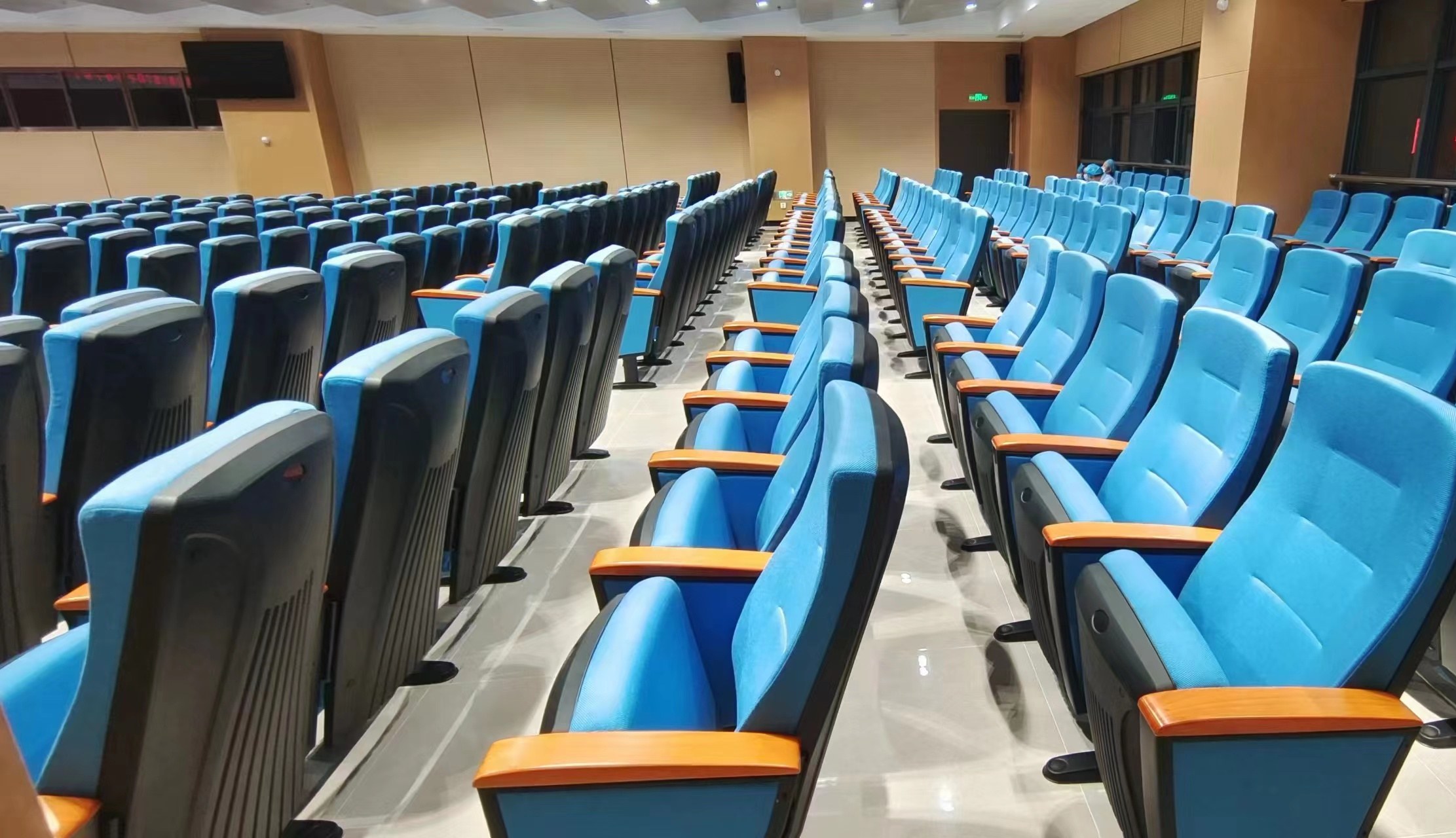In large conference halls, school auditoriums, theaters or studios, the choice of auditorium seats is crucial. So, here are a few misunderstandings that buyers are prone to, let's take a look.
1. Material selection.
A common misunderstanding is to pursue low prices and choose inferior materials. Low-priced auditorium seats often use recycled plastics or untreated wood, which are not only prone to aging and deformation, but also may pose safety hazards. High-quality auditorium seats should use high-density polyurethane foam as filler, and its density should reach 45kg/m³ or more to ensure that it will not deform after long-term use. A university auditorium once purchased low-priced seats, and a large area collapsed after two years of use. Eventually, it had to re-purchase, causing greater losses.
2. Excessive pursuit of multi-functions and neglect of practicality.
Some buyers require auditorium seats to integrate too many functions, such as folding table boards, USB charging ports, etc., but these functions may increase the failure rate and affect the main use functions. The reasonable approach is to select necessary functions according to actual needs. For example, the auditorium seats with writing boards purchased by a conference center are mostly idle in the end due to low frequency of use and increased maintenance difficulty.

3. Ignore the venue space planning.
If the size, arrangement and channel design of the auditorium seats are not considered during the purchase, it may lead to: the seat spacing is too narrow, the audience is inconvenient to enter and exit, and the experience is reduced; the channel design is unreasonable, affecting the flow of people, and even not meeting the fire safety standards; the arrangement of the auditorium seats does not match the venue, affecting the overall visual effect and efficiency of use.
4. Ignore installation and maintenance.
The installation of auditorium seats needs to consider multiple factors such as ground flatness, row spacing, and aisle width. Improper installation may lead to uneven arrangement of seats, inconvenience in use, and even safety hazards. Because a theater did not consider the ground slope, it was found that the rear row of vision was blocked after installation, and the installation plan had to be readjusted, resulting in time and economic losses. In addition, many purchasers believe that auditorium chairs do not need maintenance after installation, which leads to the accumulation of small problems into major failures. A reasonable maintenance plan should include regular inspection of screw tightening, lubrication of mechanical parts, and cleaning of surfaces.
Navigation
Contact Us
0086 13927706942
0757-86513332
Huangji Road, Jiujiang Nanhai, Foshan, Guangdong, China
Leaving a message. :